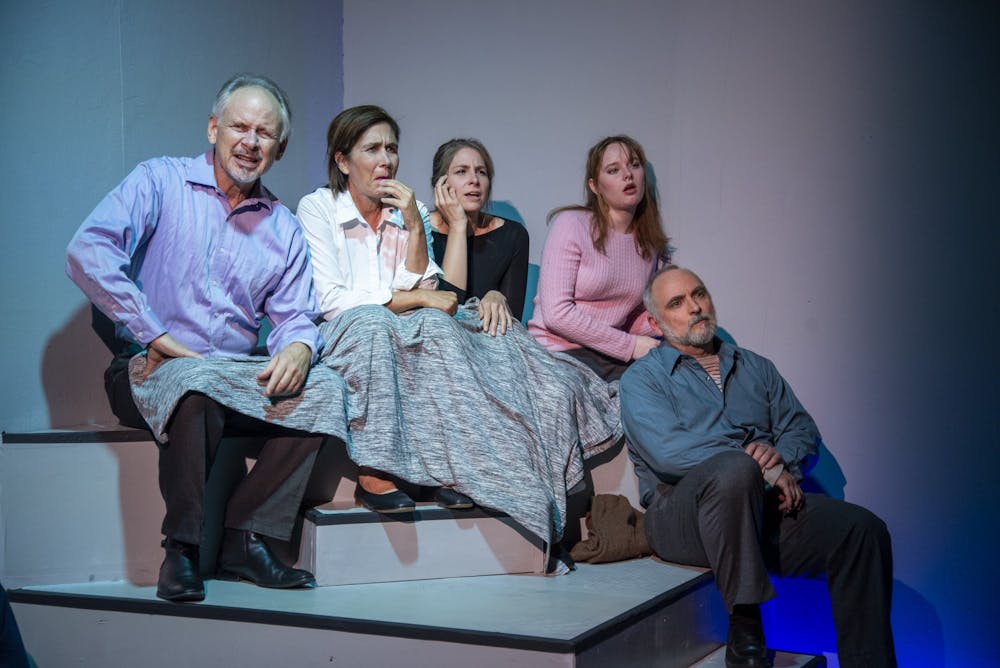In a world of constant stimulation and information, where can humanity be found? Live Arts explores this question in its season’s opening production, Caryl Churchill’s “Love and Information,” which will run Sept. 30 through Oct. 22 in the Founders Theater. The intimate space became home to dozens of stories in a captivating exploration of human nature and the modern world.
“Love and Information” is a play unlike any other. In a rapid sequence of diverse vignettes, Churchill explores what it means to be truly human in a modern, knowledge-driven world. With no overarching plot or even consistent characters, the play consists of over 50 short scenes in seven sections, each tackling the titular concepts of love or information in a new, unique way. Scenes are as little as a single word or action and no longer than five minutes, making the play a fascinating experiment in structure and narrative.
The driving force behind the production was its small, yet powerful cast of nine actors. With over 100 different characters, each actor was tasked with portraying dozens of distinct characters and rapidly switching between them, some actors being in as many as three scenes in a row. This posed a new challenge for director Susan Evans.
“I couldn't tell people what they were playing,” Evans said. “We didn't decide that until probably three or four weeks into the rehearsal process. We continually did improv to figure out who is the best person to tell the story, how this fits together and where these people are in any given scene … In fact, some rehearsals were complete and utter chaos.”
Perhaps the most impressive feat was the actors’ ability to work together as an ensemble and build complex relationships within short scenes. Actors effectively executed the shortest of scenes — including a recurring scene entitled “Depression,” when any character would say a single line to another, who would never respond — but were also able to grow complete stories and relationships in longer scenes like “Memory House,” a moving scene during which a woman recalls a childhood memory long forgotten.
To so quickly move through dozens of characters, topics and worlds takes dedication and collaboration from all aspects of the production. The artistic team delivered exactly this. The sound, lighting, costume and scenic designs worked in harmony to bring both context and further meaning to the already impactful work of the actors.
Though it would be easy to simply jump from scene to scene, avoiding the spaces between, Live Arts took advantage of every second. In fact, some of the show’s most meaningful and interesting moments lay in the space after a scene’s final line or the transitions between sections.
These transitions were punctuated with simple yet effective musical sequences, leading audiences through the emotional journey of the play. These sounds were expertly paired with varied lighting cues to create entrancing transitions, building what lighting designer Joshua Reid described as a “dreamlike state.”
“Some of the concept of the show is kind of showing that your brain will make connections that aren't there,” Reid said. “That reset feels very much, at least in my design, like a nighttime, like you're sleeping. Because in our dreams, our brain is piecing together all these random little bits of information and making them into something.”
Throughout the show, every single person’s commitment to honesty and authenticity shone through. Above all, Evans emphasized the importance of holding onto love in spite of a constantly increasing flow of information.
“The more information we have coming at us, which in theory would make us more connected, in many ways makes us more disconnected,” Evans said. “[Churchill’s] whole point is always holding on to the kernel of humanity within whatever our worlds may end up being.”







